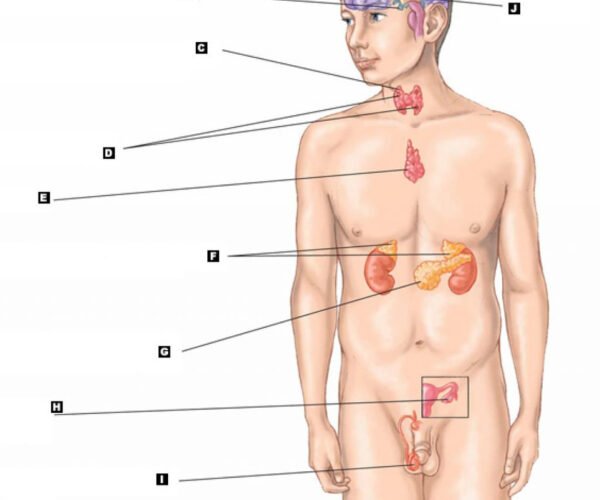Hirsutism Harmony:
Estrone’s: Hirsutism, the unwelcome sprouting of coarse hair in women on typically male patterns like the face, chest, and back, can be a distressing hormonal imbalance. Often the culprit is an overabundance of androgens, male hormones primarily associated with men. But within this hormonal orchestra, a quieter player, estrone, holds surprising sway over the hirsutism melody. Today, we’ll explore the delicate dance between androgens and estrone, and how fine-tuning its volume can bring harmony to androgen excess disorders.
The Androgen Excess Tango:Estrone’s
Imagine a hormonal dance floor where androgens – testosterone and its potent cousin, dihydrotestosterone (DHT) – lead aggressively. These dominant partners bind to hair follicle receptors, prompting the unwelcome growth of terminal hair, the kind that plagues hirsutism sufferers. But the dance takes a fascinating turn with the introduction of estrone, a weaker, yet crucial, hormonal player.
Estrone’s Countermelody:
While androgens may hold the reins, estrone acts as a subtle counterpoint. It competes with DHT for binding sites on hair follicles, effectively lowering its volume and dampening the hirsutism melody. This competition is particularly vital in areas like the face and chest, where estrone’s influence is strongest.
Tuning the Estrone Volume:
The key to hirsutism harmony lies in optimizing estrone’s volume. When androgen levels surge, estrone’s countermelody can be drowned out, leading to hirsutism. Here’s how we can bring it back into balance:
-
Combined Oral Contraceptives (COCs): These contain ethinylestradiol, a synthetic estrogen that mimics estrone’s action. By increasing circulating estrogen levels, COCs effectively compete with DHT, reducing hair growth and improving hirsutism.
-
Anti-androgen Medications: Spironolactone and flutamide block the action of androgens on hair follicles, further reducing their influence and allowing estrone’s countermelody to shine through.
-
Lifestyle Modifications: Weight management plays a crucial role. Fat tissue can convert inactive androgens into active DHT, amplifying its hair-growth promoting effects. Losing weight can decrease DHT production, giving estrone more room to work its magic.
-
Diet and Exercise: Certain dietary choices, like reducing your sugar intake and increasing fiber, can positively impact hormonal balance. Regular exercise also helps regulate hormones and improve insulin sensitivity, further contributing to hirsutism control.
Finding Your Hirsutism Harmony:
Remember, every woman’s hormonal symphony is unique. What works for one may not work for another. Consulting a healthcare professional is crucial to identify the underlying cause of hirsutism and develop a personalized treatment plan. Together, you can adjust the volume of hormones like estrone, fine-tune the hormonal dance, and bring harmony back to your life.
Beyond Hirsutism:
Estrone’s role extends beyond hirsutism. It plays a vital part in bone health, cardiovascular function, and cognitive function. Maintaining optimal estrone levels, particularly after menopause when natural production declines, can contribute to overall well-being.
The Takeaway:Estrone’s
Hirsutism may feel like a discordant note in your life, but by understanding the role of estrone and fine-tuning its volume, you can restore hormonal harmony and reclaim your confidence. Remember, you’re not alone in this hormonal dance. With the right guidance and support, you can find your personal rhythm and embrace a life free from unwanted hair and hormonal imbalance.
The Androgen Excess Amplification:
- Polycystic Ovary Syndrome (PCOS): This common hormonal imbalance often involves elevated androgen levels, causing hirsutism and other symptoms. In PCOS, follicles in the ovaries develop but don’t mature, leading to increased androgen production.
- Congenital Adrenal Hyperplasia (CAH): This genetic condition disrupts cortisol production, leading to a compensatory increase in androgen production. CAH can manifest as early as infancy with symptoms like ambiguous genitalia and hirsutism.
- Certain Medications: Some medications, like steroids used for medical conditions, can elevate androgen levels and contribute to hirsutism.
Tuning the Estrone Volume
- Topical Treatments: Creams and lotions containing estrogen can directly target affected areas, offering localized control over hair growth.
- Laser Hair Removal: While not a hormonal intervention, laser hair removal can effectively reduce unwanted hair and offer long-term relief from the visible manifestations of hirsutism.
- Microneedling with Minoxidil: This approach combines the hair growth stimulation of minoxidil with the collagen-boosting benefits of microneedling, potentially improving hair follicle health and reducing unwanted hair growth.
The Future of Hirsutism Harmony:
Research is actively exploring new avenues for managing hirsutism and fine-tuning the estrone melody. Some promising areas include:
- Developing more targeted anti-androgen medications: These medications would specifically block DHT action in hair follicles, minimizing side effects while maximizing efficacy.
- Estrogen replacement therapies: For women with declining estrogen levels due to menopause or other factors, personalized estrogen replacement therapy could help optimize estrone’s protective effects against hirsutism.
- Understanding the role of other hormones: Research suggests that hormones like insulin and insulin-like growth factor (IGF-1) may also play a role in hirsutism. Exploring their interactions could lead to even more comprehensive treatment strategies.

Empowering Minds, Nourishing Bodies: Introducing Hormone.
In the pursuit of knowledge-driven wellness, Dr. Zaar, a distinguished specialized clinic dietitian in Lahore, introduces a groundbreaking educational initiative—Hormone.
Read MoreEstrone’s Whispers in Insulin Resistance and.
Metabolic Mischief: Estrone’s : In the grand orchestra of metabolism, where hormones harmonize and enzymes conduct, a rogue note has.
Read More